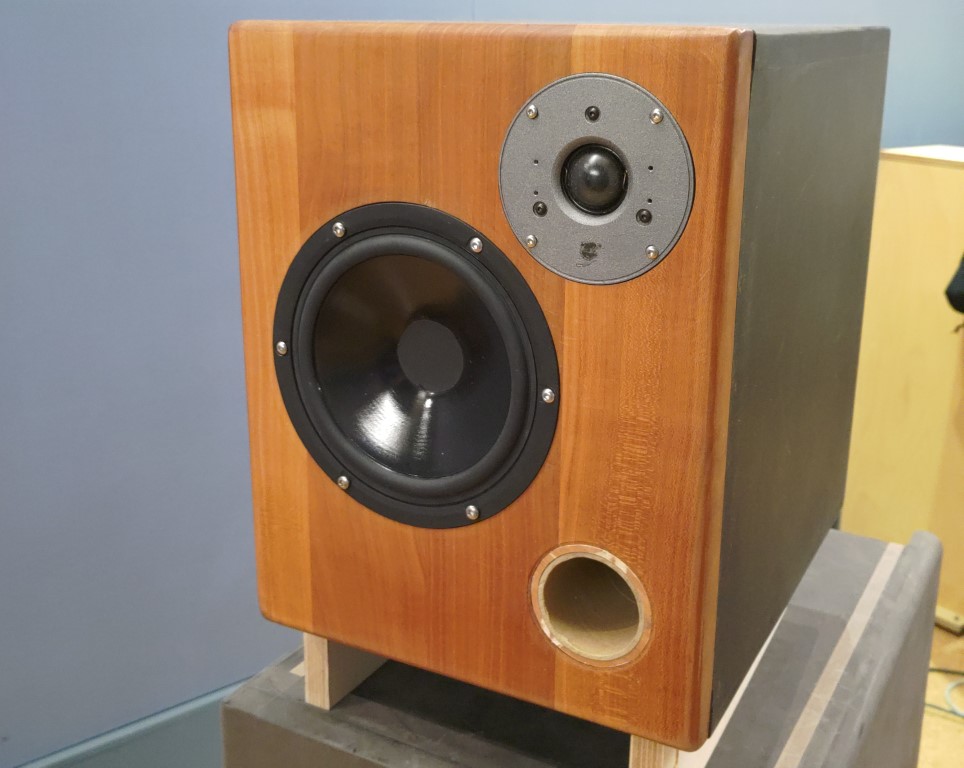
Scan Speak 18W (2015)
23. Dezember 2021 - Lesezeit: 9 Minuten
There were a few drivers left over from a customer project, so why not aim for an active 2-way system for everyday use?
The TS parameters of the Scan Speak 18W/8522 A01 are ideal for a bass reflex design in 18 to 25 liters. For the tweeter a morel MDT32S with 28mm voice coil and 200 Watt is a bit overkill for this design, but the characteristics are well suited for matching with the woofer.
| System | Scan Speak / Morel |
|---|---|
| Topology | 2 Way active with BSC |
| System sensivity | 90 dB @1m /2.83V |
| Power handling | 60 watts |
| Impedance | 6 Ohm minimum |
| Crossover | 2.5kHz / LR4 |
Vented enclosures can cause problems if not properly designed, as the reproduction mechanism relies on two resonant systems, and it takes time and some listening test to get the bass response right.
Driver
The Scan Speak 18W/8522 A01 is a high quality 18 cm low/midrange driver, made in Denmark. With a low-resonance, ventilated aluminum die-cast basket, a lightweight paper cone, coated on both sides and a 2-layer 25 mm voice coil on aluminum carrier, a linear frequency response up to over 5 kHz with low distortion even at high excursions can be achieved.
The morel MDT-32S is an improved version of the former MDT-32 with a very high and regarded reputation. The hand treated silk soft dome has great consistency. The large volume, damped rear chamber is shaped to minimise vibrations and internal reflections. A very smooth impedance curve and a low resonance point is the result. Aluminum Hexatech voice coil and ferro fluid cooling let this tweeter handle a tremendous power. It exhibits a clear and detailed sound with a fast transient response and excellent dynamics.
Calculating around 90dB SPL @ 2.83V for both drivers, we can assume that a small amplifier will do the job.
Data Sheets:
Enclosure
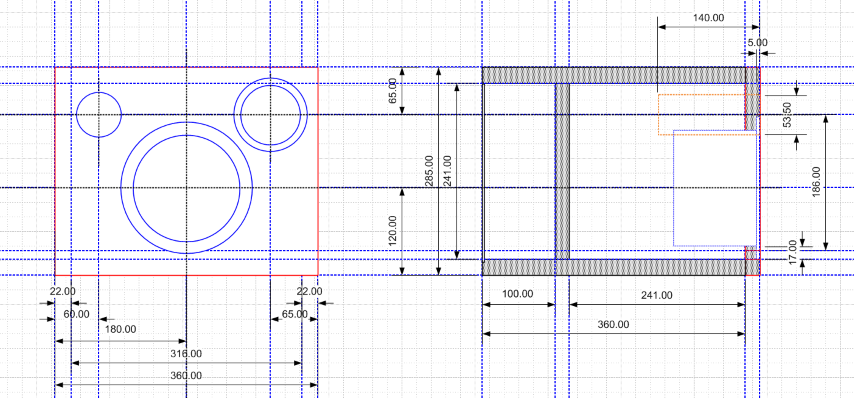
The standard 18W drivers are mostly seen in 25-32 liter ported enclosures and we have an almost flat response down to 40 Hz. However the downside for such a performance is efficiency on the low side. It's always a good idea to stick the driver in a test enclosure and check the performance with different ports.
I ended up with 23 liter and an F3 of 50 Hz. You have to check this under live performance condition, there is no such thing like a perfectly accurate calculation for ported bass tuning. The enclosure is easy to build, one bracing needed to divide the space so there is room for the electronic components in the back. The tweeter offset position dictates a flat baffle, and of course a mirrored setup for left and right enclosure.
Crossover
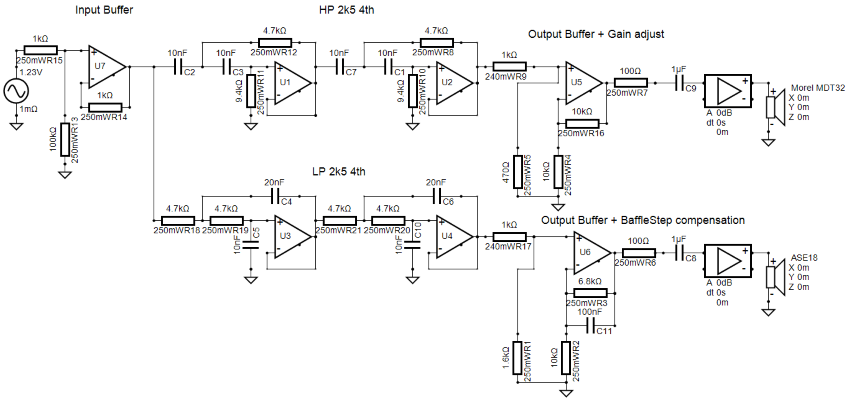
After intensive listening tests, I came to the conclusion that an LR4 crossover was the best alternative. The schematic above needs a bit of explanation.
The offset of the tweeter creates a relatively wide front panel. The transition from 2pi to 4pi causes a sound pressure difference of 4-6dB (see Baffle Step Compensation). This has to be taken into account and is achieved in the buffer stage U6 by adjusting the value of C11/ R2 / R3.
The cut-off frequency of the HP and LP filters lies at 2.5 kHz and the gain adjustment of the tweeter is done in buffer U5 with R9 / R5. For DIY applications I find the good old through-hole technique easiest to handle. As long as components are still available, most simple breadboards can be used.
Alternatively, and to eliminate possible errors, Rod Elliot / ESP has ready-made PCB's for all types of filters.
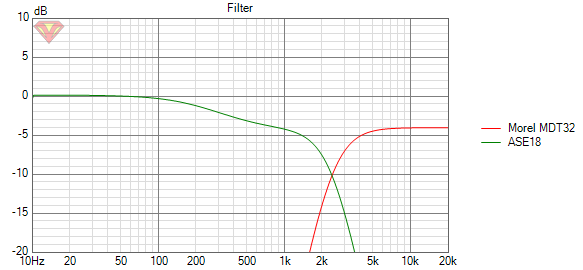
Transfer function of the filter curve. The influence of the Baffle Step Compensation with a reduction of 5 dB in the range 100Hz to 1kHz is clearly visible.
The LR4 filters allows us to use a flat baffle, getting the most out of the MDT32S top end and giving us good phase tracking around the crossover point and symmetrical lobbing when hitting LR4 targets perfectly.
Measurement
When designing active systems, I use a DSP test rigg for the first tests. If the values measured and the listening test are satisfying, I construct the filters with analogue components.
Only the combination of driver-enclosure-position and listening distance yields results that allow a realistic assessment.
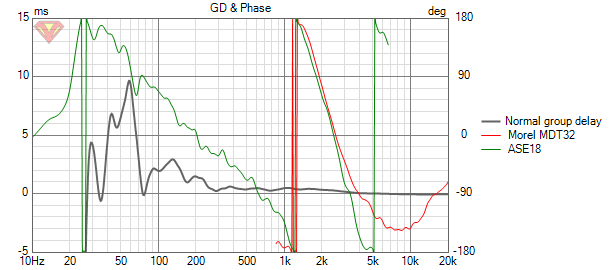
The importance of phase coherence cannot be over emphasised. This is a product of the filter topology and driver position on the front baffle. If we have more than a few degrees of misalignment, it produces cancellations that are difficult or impossible to correct.
The measurements are done on axis in the acoustic center with a distance of 0.8 meters, important is the area in the transition of the crossover frequency, here 2.5 kHz.
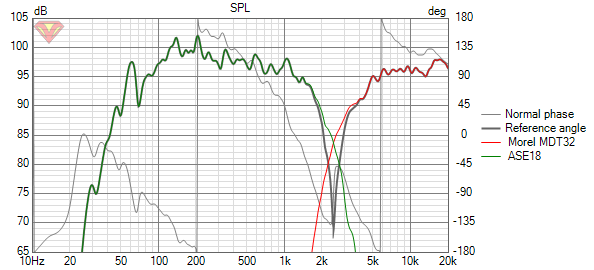
The response that matters is the acoustic one. Not the electrical one. In other words, you could have a 2nd order network - hitting 3rd order slopes and thus are 270/90 degrees out of phase, or you could have a 3rd order network - hitting 4th order slopes and thus are 0 degrees in phase. Reversing the polarity as seen above should produce a deep null at the crossover frequency.
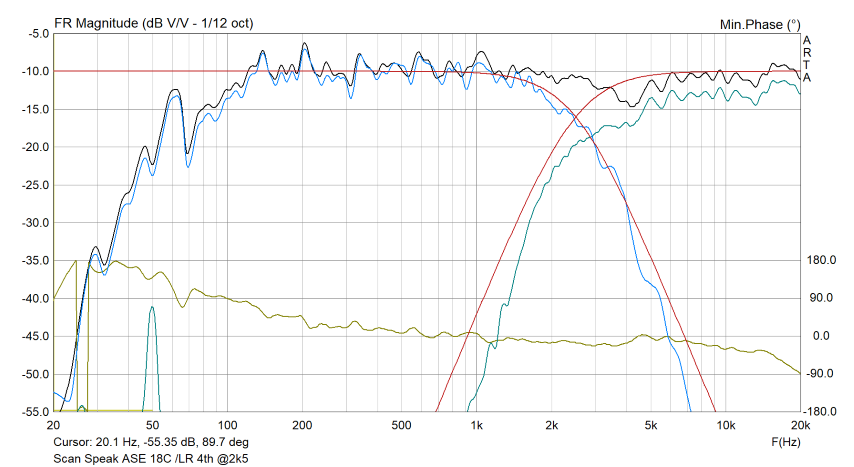
Final system response is smooth and extended on both ends with only a small deviation from the desired filter curves (red). With the reduction in the midrange a homogeneous on axis reproduction at a listening distance of approx. 2 meter is achieved.
Power handling
The amplifier power should always be adjusted to the threshold values of the driver. With 2-way systems, a compromise has to be made so that the bass range is not overloaded. If required, the addition of a sub is usually the better solution.
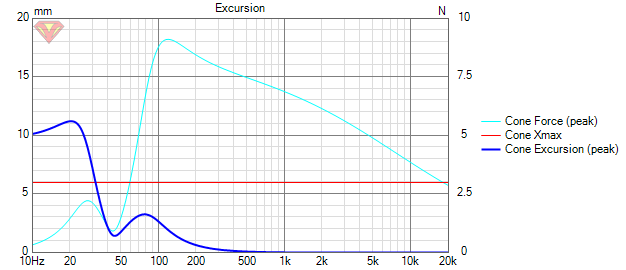
If we check cone excursion and port velocity the above diagram shows the cone Xmax @ 10 Watts. Anything below 30 Hz will exceed the linear range of the driver.
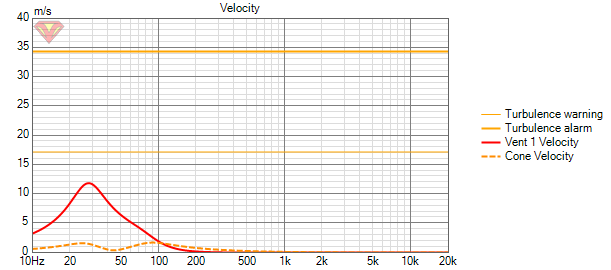
Vent velocity should generally be kept below 15 m/s. Due to the relative high efficiency of 90 dB, the max. power needed to drive this speaker is around 30 Watts per channel.
Room placement
The full response curve is respectably flat. Listening distance is approximately 2 meter. Baffle step compensation works well and should match for most rooms.
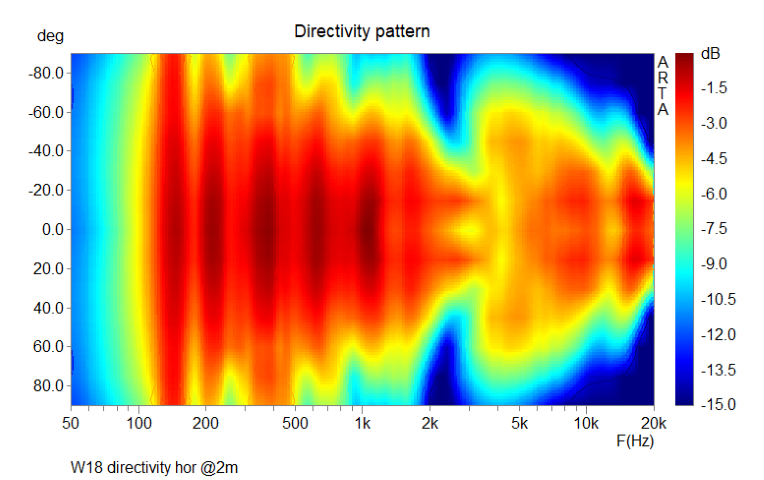
With the measurement of the off-axis spectrum, the bundling effects of the relatively large cone and the fairly high coupling to the tweeter becomes visible. This is one of the main problems with 2-way Systems.
However, within +/- 30 degrees we get a homogenous tonal balance, if used in a well treated room.
Summary
Part of the magic of this system is simply due to the fact that it's a solid LR4 design. Accurate 4th order slopes are hard to pull off, and only drivers with very wide bandwidth and with smooth response and low distortion will perform.